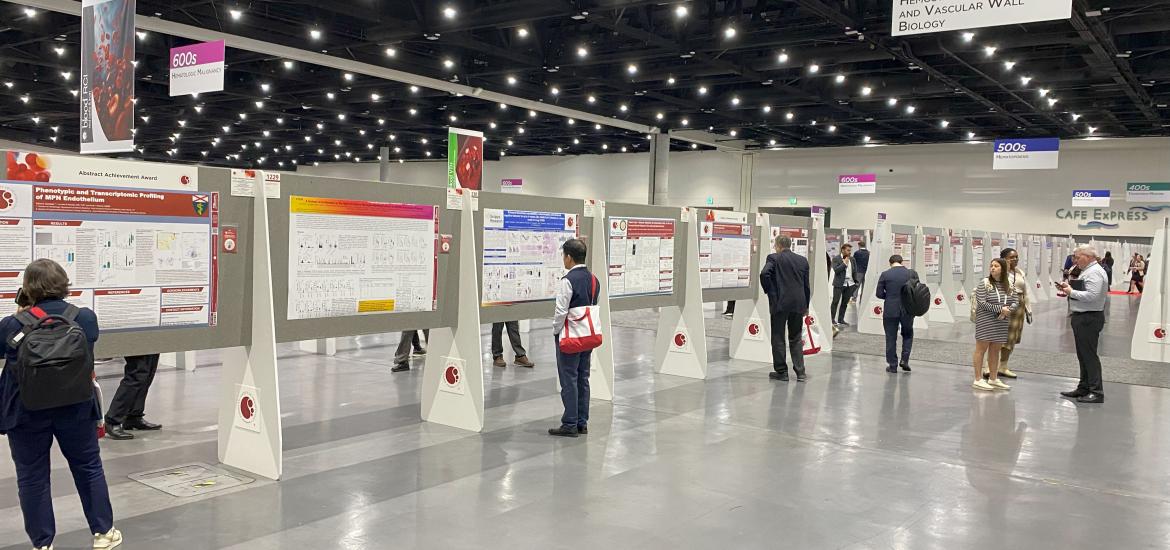
ASH 2024 – J&J reveals more about Lava's secret sauce
JNJ-89853413 is disclosed as the lead in the two companies' 2020 alliance.
JNJ-89853413 is disclosed as the lead in the two companies' 2020 alliance.

The secret sauce behind Lava Therapeutics' gamma-delta T-cell engagers hasn't been widely disclosed, despite the biotech having already secured the buy-in of Seagen and Johnson & Johnson through licensing deals. Now a low-key poster at ASH has shed a little more light on the approach.
Indeed, the lead project under Lava's J&J deal had itself remained secret, but has now been revealed as JNJ-89853413, a molecule with an until now undisclosed mechanism that is due to start phase 1 imminently. The preclinical ASH poster shows JNJ-89853413 to be a bispecific MAb that targets CD33, and uses a high-affinity Vδ2 binder to engage gamma-delta T cells.
It asserts that CD33 is expressed in about 90% of AML cases, but says development of CD33-targeting therapeutics, including Car-T and NK cell therapies, has been held back by lack of tolerability and on-target, off-tumour toxicities caused by the expression of CD33 on normal myeloid cells.
However, being able to engage Vδ2 T cells could offer advantages thanks to greater activity this cell type against cancer cells over normal cells, the poster claims. Vδ2 T cells are the predominant human gamma-delta T-cell population, and make up about 5% of the T-cell population in the peripheral blood of healthy donors.
J&J tapped into Lava's technology through a discovery alliance in 2020. Neither the terms nor the targets of this tie-up were disclosed, but three years later the companies said a lead project had been selected for "development towards clinical studies"; JNJ-89853413's first-in-human study went live on clinicaltrials.gov in October.
The ASH poster confirms that JNJ-89853413 is the result of the Lava deal, and says the project comprises a fully human IgG1 MAb with an anti-CD33 arm and an anti-Vδ2 arm. The latter was generated by Lava, with humanisation and post-translation modification performed by J&J.
Lava pipeline of gamma-delta T-cell engagers
| Project | Target | Ownership | Status |
|---|---|---|---|
| LAVA-1207 | PSMA | Wholly owned | Ph1/2 in mCRPC |
| LAVA-1223/ PF-08046052 | EGFR | Licensed to Seagen in 2022 (now part of Pfizer) | Ph1 in solid tumours |
| JNJ-89853413 | CD33 | Part of 2020 collaboration with Johnson & Johnson | Ph1 in AML/MDS starts Jan 2025 |
| LAVA-1266 | CD123 | Wholly owned | Ph1 in AML/MDS in Australia/New Zealand |
| LAVA-1427 | Undisclosed | Wholly owned | Preclinical |
| LAVA-1433 | Undisclosed | Wholly owned | Preclinical |
| LAVA-051 | CD1d | Discontinued in 2023 | Was in ph1/2 in haem malignancies |
| LAVA-1278 | CD40 | No longer in pipeline | Was preclinical |
Source: OncologyPipeline.
Lava's second major success was to have attracted Seagen as a licensing partner in 2022, just as that company was rumoured to be attracting takeover interest, which later turned into a $43bn buyout by Pfizer. That deal concerned as specific asset, LAVA-1223, and was worth $50m up front.
LAVA-1223 is an anti-EGFR gamma-delta T-cell engager, and is still in development at Pfizer, in a phase 1 study in lung, colorectal and head and neck cancers under the code PF-08046052. Besides these two projects Lava has the wholly owned anti-PSMA project LAVA-1207, though an earlier lead, targeting CD1d, has been dropped from the pipeline.
Lava floated in March 2021, raising $100m at $15 per share, but since then has lost 90% of its value, and is currently capitalised at just $45m.
1914













